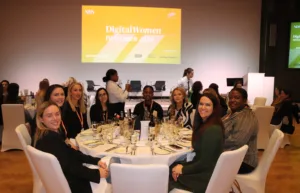Sheree Atcheson, Group Vice President of Diversity & Inclusion at Valtech
Diversity and inclusion (D&I) are key ingredients in any successful business. The most innovative ideas are formed at the intersection of different people, cultures, and experiences. Building a diverse workforce as part of an inclusive culture therefore plays a major role in fostering innovation and growth.
As such, it’s no surprise that corporate D&I initiatives have become commonplace. Nearly all (96%) of organisations will undertake initiatives over the coming 12 months – covering areas such as gender identity, race/ethnicity, LGBTQ+, and disability – with 84% already having a strategy in place or planning to introduce one.
Societal shifts have also had an impact on how businesses perceive and approach D&I. For example, the police brutality that caused the murder of George Floyd in 2020 led to an incredibly important global awakening on racial inequality. Similarly, there has been a similar awakening towards Asian communities due to the stereotyping and rise of hate crimes following COVID-19.
However, despite the growing prevalence of D&I initiatives, many multinational businesses are still falling into the trap of taking a one-size-fits-all approach.
Exceptionalism persists
One of the most common problems we see with D&I work is that initiatives aren’t tailored to specific countries or regions. The most common example is a US-based company looking to expand its D&I initiatives into Europe or Asia, highlighting the issue of US exceptionalism. This is where businesses take a US – specifically a North American – slant and then simply replicate that across every region.
We’ve seen companies try to map the same strategy and tactics used in the New York office into Europe, or people move up from local D&I leadership positions into international roles and take the perspective of ‘well it worked here so it’ll work there too’.
But the truth is it won’t. This blanket approach to D&I doesn’t make sense. It ignores the cultural, religious, and societal nuances that change what diversity means and must be understood to properly support employees in different regions. For example, ethnicity and inclusion practices are very different in Europe and Asia compared to the US – such as the questions you’re allowed to ask, and the laws and regulations that are in place.
A one-size-fits-all approach also makes assumptions, and assumptions are riddled with bias. This leads to a half-baked D&I strategy. But perhaps most importantly, taking a US-first approach to D&I in a global company disconnects people. Employees feel like they aren’t being listened to and that leadership is relying on a superiority perspective rather than taking the time to understand their specific situation.
When you do that, you can’t expect employees in other regions to want to be involved. In fact, it usually has the opposite effect of pushing people away rather than engaging them in the issues. After all, why would they want to contribute to an initiative – however noble the cause – that is based on exceptionalism?
Embracing localisation
So, what’s the solution? Firstly, D&I leaders must recognise that majority-demographics and marginalised groups are not the same everywhere. This requires them to evolve their thinking past just the main office location or headquarters and remember that inclusion means inclusion for everyone.
When it comes to implementing D&I work across organisations and regions, businesses must be prepared to undergo specific listening, understanding and action that is regional based rather than generalised. While there will certainly be overarching pillars or themes that apply across geographies, the implementation, processes, policies, and initiatives that bring those themes to life must be different. The delivery must be considerate of different needs from different countries and regions – it must be localised to specific countries. If you’re rolling out a D&I program in the UK, listen to what your UK-based employees actually need.
Take training as an example, which is typically a crucial part of D&I strategies. Training helps people understand what inclusion means to them, how to challenge their own biases, and how privilege manifests in society. Clearly, this will vary across regions due to the different landscapes we face across the Americas, Europe, MENA & APAC. Businesses must therefore take the conscious decision to design training programmes with tailored nuances that are relevant to specific regions and countries.
Ultimately, tailored initiatives are the secret to success. The melting pot of opinions and perspectives from different regions all play a part in creating an effective D&I strategy. Any business that fails to evolve its thinking past just the main office location will never have a material impact. But, by taking the knowledge from a US-centric context and localising it to the UK, businesses will be able to develop a global strategy that ensures all employees benefit from diversity and inclusion work.









